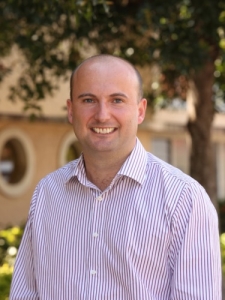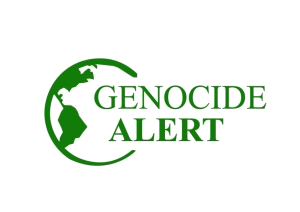Worin sich Massenverbrechen unterscheiden: Unterscheidung und Überlappung
Worin unterscheiden und ähneln sich die Kernverbrechen des Rom-Status – Kriegsverbrechen, Verbrechen gegen die Menschlichkeit, Völkermord und das Verbrechen der Aggression?
Worin unterscheiden und ähneln sich die Kernverbrechen des Rom-Status – Kriegsverbrechen, Verbrechen gegen die Menschlichkeit, Völkermord und das Verbrechen der Aggression?
Das Verbrechen der Aggression nimmt eine Sonderrolle unter den Kernverbrechen ein. Dass Verantwortliche heute individuell für das Führen eines Angriffskrieges bestraft werden können, ist revolutionär, zugleich aber nicht ohne Hürden und Einschränkungen möglich.
Das Verbrechen des Völkermordes hat den Rang des “crime of crimes” inne. Doch was versteht man rechtlich unter dem Begriff? Und gibt es eine Hierarchie zwischen den Kernverbrechen?
Auch, wenn es in gegenwärtigen Konflikten oft nicht so scheint, ist im Krieg nicht alles erlaubt. Genau dafür sorgt das Humanitäre Völkerrecht.
Verschiedene Tathandlungen, wie Tötung, Versklavung, Folter oder Vergewaltigung müssen nicht zwangsläufig Kriegsverbrechen darstellen, sondern können unter Umständen auch als Verbrechen gegen die Menschlichkeit verfolgt werden. Entscheidend ist dabei ihr Kontext.
Alia wurde in Kabul geboren und wuchs dort in einer schiitischen Hazara-Familie auf. Nachdem sie einige Jahre als Hebamme gearbeitet hatte, entschied sie sich, Jura und Politikwissenschaft zu studieren. Als die Taliban im August 2021 Kabul einnahmen, verlor sie nicht nur ihren Job und das Recht, zu studieren: Sie erhielt immer wieder Morddrohungen – weil sie eine Frau und eine Aktivistin ist und der Minderheit der Hazara angehört – und war letztendlich gezwungen, mit ihrer Familie in den Iran zu fliehen.
Es besteht ein hohes Risiko, dass in Afghanistan Massenverbrechen gegen religiöse und ethnische Minderheiten, wie Shiiten, Sufis und vor allem Hazara, begangen werden. Die deutsche Bundesregierung muss die Bedrohungslage anerkennen und sich aktiv für die Einhaltung der Menschenrechte einsetzen.
Eine neue Regierungskoalition in Berlin bietet die Chance, bisheriges außenpolitisches Handeln zu überdenken. Allzu oft hat Deutschland angesichts von Massenverbrechen nur langsam reagiert, statt diese frühzeitig zu verhindern bzw. kritische Situationen mit einem hohen Risiko für das Auftreten von Massenverbrechen aktiv zu entschärfen. Im Ergebnis der Sondierungsgespräche von SPD, Grünen und FDP heben sie hervor, dass sich Deutschland seiner globalen Verantwortung stellt und dass sie die Außen-, Sicherheits- und Entwicklungspolitik wertebasiert aufstellen wollen. Wir nehmen diese Ankündigung beim Wort und wenden uns mit konkreten Vorschlägen an die zukünftige Koalition.
Vor 72 Jahren wurde die UN-Völkermordkonvention beschlossen. Dennoch kommt es bis heute immer wieder zu Völkermorden und anderen Massenverbrechen. Der Versuch des sogenannten Islamischen Staates, die Jesid*innen im Irak auszulöschen, die Ermordung und Vertreibung der Rohingya durch das Militär in Myanmar und die Unterdrückung und Ausbeutung der muslimischen Minderheit der Uighur*innen in China sind nur die jüngsten Beispiele für solch systematische identitätsbasierte Gewalt. In vielen Konflikten kam es in den letzten Jahren zu schweren Kriegsverbrechen, wie aktuell etwa in Äthiopien. Autoritäre Regime und extremistische Ideologien weltweit schrecken in ihrer Repression Andersdenkender nicht zurück vor schweren Menschenrechtsverletzungen oder gar Verbrechen gegen die Menschlichkeit.
Das Verhindern von Massenverbrechen, d.h. von Völkermorden, Verbrechen gegen die Menschlichkeit und systematischen Kriegsverbrechen, bleibt eine moralische und historische Verantwortung Deutschlands. Auch im Hinblick auf die katastrophalen wirtschafts- und sicherheitspolitischen Auswirkungen ist die Prävention solcher Verbrechen im Interesse der Bundesrepublik. Dies hat die Bundesregierung im Juni 2017 mit den Leitlinien zur Krisenprävention bekräftigt: “das Verhindern von Völkermord und schweren Menschenrechtsverletzungen und das Eintreten für bedrohte Minderheiten sowie für die Opfer von Unterdrückung und Verfolgung gehören zur deutschen Staatsraison.”
Es gilt nun, dies auch praktisch umzusetzen. Im Sondierungsergebnis kündigen SPD, Grüne und FDP an, eine nationale Sicherheitsstrategie vorzulegen. Diese muss die Prävention von Massenverbrechen klar miteinschließen. Denn um solche Gräueltaten effektiver zu verhindern, ist eine außenpolitische Schwerpunktsetzung, klare Positionierung und langfristige Konzeptentwicklung notwendig. Bislang findet sich in der deutschen Außenpolitik ein blinder Fleck bei der frühzeitigen Erkennung und der gezielten Prävention von Massenverbrechen.
Die Bundesrepublik muss ihr Bekenntnis zur internationalen Schutzverantwortung, zur Völkerstrafgerichtsbarkeit sowie zur Arbeit des internationalen Strafgerichtshofs bekräftigen. Dies sollte im Koalitionsvertrag mit Hinweis auf folgende konkrete Schritte untermauert werden:
Der Bundestag-Unterausschuss “Zivile Krisenprävention, Konfliktbearbeitung und vernetztes Handeln” hat sich dieser Themen bislang einmal angenommen, am 14. Januar 2019, in einem öffentlichen Fachgespräch zur Prävention von Massenverbrechen angenommen. Damals diskutierten die Abgeordneten mit dem UN-Untergeneralsekretär Adama Dieng, damals Sonderberater des UN-Generalsekretärs für die Prävention von Völkermord, sowie dem Geschäftsführer von Genocide Alert, Jens Stappenbeck. In der neuen Legislaturperiode gilt es daran anzuknüpfen.
Das frühzeitige Verhindern von Massenverbrechen ist kein politisches Randthema. Massenverbrechen führen jedes Jahr zu massivem Leid und immensen Fluchtbewegungen. Wir hoffen auf den Einsatz der neuen Regierungskoalition dafür, dass die Prävention dieser schwersten Menschenrechtsverletzungen nicht nur konzeptionell als Teil der deutschen Staatsräson verstanden, sondern auch praktisch in der Außenpolitik und Entwicklungszusammenarbeit umgesetzt wird.
Die Koalitionsverhandlungen bieten die Möglichkeit, hier wichtige Weichenstellungen vorzunehmen. Wir fordern alle Verhandelnden mit Nachdruck auf: Nutzen Sie diese Chance.
Eine detailliertere Diskussion unserer Vorschläge ist hier zu finden:

Simon Adams, Executive Director des Global Centre for the Responsibility to Protect in New York
Simon Adams ist the Executive Director of the Global Centre for the Responsibility to Protect in New York. He has worked extensively with civil society organizations around the world. He has published several books on international conflict and is a reknown expert on issues of mass atrocity prevention and international justice. The Global Centre for the Responsibility to Protect is working for the promotion of universal acceptance and effective operational implementation of the norm of the „Responsibility to Protect“ populations from genocide, war crimes, ethnic cleansing and crimes against humanity. It engages in advocacy around specific crises, conducts research designed to further understanding of R2P, recommends strategies to help states build capacity, and works closely with NGOs, governments and international and regional institutions to operationalize the Responsibility to Protect. The Centre is funded by different governments, donations and individuals.
Genocide Alert has asked Simon Adams about his thoughts and recommendations on the nexus of conflict prevention, development cooperation and atrocity prevention.
Simon Adams: There is obviously an overlap but I think what is distinct is where you apply a mass atrocity prevention lens to particular forms of development cooperation. Not to be too reductive, but is digging a well just an issue of providing clean drinking water in keeping with a particular SDG? What if the well is in a village where people are divided on the basis of rival communal identities and access to water is a source of conflict? What risks are therefore associated with digging the well? Could it actually end up exacerbating tensions or reinforcing discriminatory structures? Or could a well be provided in a way that actually helps bring the community closer together and helps overcome some past sources of conflict? I actually experienced this exact situation in East Timor in 2002 but it is illustrative of a bigger issue about how we understand that development cooperation does not take place in a political, historical and social void. Context is crucial.
Simon Adams: Yes. Absolutely. We know, for example, that mass atrocities are a developmental catastrophe. The war in Syria has wiped out 35 years of developmental gains in health and welfare. The genocide in Rwanda caused a 60% reduction in the economy in one year. The civil war in Syria has kept an entire generation of kids out of school and will have a drastic impact on their ability to meet SDG goals. Mass atrocity prevention should definitely be an explicit goal of development cooperation. It’s not just a matter of avoiding risks, but of consciously understanding how development can help undermine the underlying sources of identity-based conflict.
Simon Adams: I think Denmark has made some progress in this area and some other states too. Cross-ministerial cooperation is essential. For example, I’m sure Germany’s ministries of justice, foreign affairs and development are all concerned about the situation with the Rohingya in Myanmar. It would be a disaster if future development cooperation in Rakhine State profited the people who carried out the genocide and whom the ministries of justice and foreign affairs probably think should be sanctioned or taken to the ICC.
Simon Adams: See my example re: East Timor above. Also, Rwanda was a major recipient of aid prior to the genocide. No one really questioned the fact that the regime openly discriminated against Tutsi. The government was also seen as a reliable and reasonably non-corrupt partner. Many western governments liked doing development work in Rwanda. And then of course 1994 happened. I think there are numerous other examples where governments who are recipients of aid divert that aid to benefit particular communities to the detriment of others.
Simon Adams: Too many too list. Look at any country with identity-based divisions and with a history of violent conflict. I think development assistance has been crucial in many of these countries and not just those that have formally transitioned from active armed conflict to peace.
Simon Adams: They are often not just the eyes and ears on the ground, but the mouth that can speak up about the specific ways in which particular forms of development cooperation could make a situation worse, or could radically improve it.
The interview was conducted by Paul Stewens
» Zurück zur Projektseite Prävention von Massenverbrechen und Entwicklungszusammenarbeit

Alexander Bellamy
Alexander Bellamy is Director of the Asia Pacific Centre for the Responsibility to Protect and Professor of Peace and Conflict Studies at The University of Queensland, Australia. He is an expert on Human protection, Peacekeeping, and the Responsibility to Protect. His research research and policy consultancy focusses on the prevention of genocide and mass atrocities and human security in the Asia Pacific region. The Asia Pacific Centre for the Responsibility to Protect is engaing with partners across the Asia Pacific-region to protect vulnerable populations and to develop regional expertise on atrocity prevention. The Centre is funded by The University of Queensland and the Australian Government’s Department of Foreign Affairs and Trade.
Genocide Alert has asked Alex Bellamy about his thoughts and recommendations on the nexus of conflict prevention, development cooperation and atrocity prevention.
Alexander Bellamy: The goals are different. Development is focused on achieving economic growth and reducing poverty; structural atrocity prevention is about reducing atrocity risks and building resilience to those risks. Unless development planners are asking specific questions about how their work can support atrocity risk reduction and resilience building there is a good chance the work won’t get done. There is also a chance that development work can exacerbate risks (as happened in Sri Lanka for example) by unintentionally reinforcing other social divides.
Alexander Bellamy: I usually talk about the injection of an ‘atrocity prevention lens’ into development cooperation. This need not require an explicit atrocity prevention in development cooperation – though it would always be useful to have one. Ideally, supporting atrocity prevention would be a whole of government aspiration driven by a government’s commitment to R2P. The point of a lens is to ensure that it is someone’s job to (1) assess risks/resilience in country and sensitize foreign office/development officials to those risks /sources of resilience; (2) examine whether partnerships are contributing to risk reduction/resilience building, and how they might better achieve this; (3) ensure that partnerships do no inadvertently increase risks.
Alexander Bellamy: every government is different in terms of how it organises itself and develops cross-ministerial policy. The US established an ‘atrocity prevention board’ comprising officials from relevant departments to share information and analysis. Others simply give their R2P focal point responsibility for coordinating across ministries. Others set up committees. The German government’s commitment goes beyond that of most other governments and creates a strong mandate for establishing some sort of whole of government mechanism. Whether that’s an individual, committee, or board, depends on what people think is the most effective way to get the job done.
Alexander Bellamy: Yes, Sri Lanka prior to 2009 – aid projects in Tamil run areas exacerbated tensions with local Sinhalese and created fears of an internationally backed pseudo state emerging. Another is Myanmar – the inflow of investment and aid in the context of government reform created impetus for land reclamations to allow inward investment. Demand for land in Rakhine state was one of the factors driving ‘clearance’ operations. It has also exacerbated Tatmadaw interest in securing access to timber and other resources in other conflict affected areas. In this context, it was significant that aid and investment did not come with strong human rights conditionality attached to it.
Alexander Bellamy: When you’re talking structural risks, there is no direct connection between risk and the onset of atrocities. Societies with high risk can survive decades without ever succumbing to atrocities, for example. So we cannot draw a direct line from structural prevention to avoidance. We can, however, look at places where risk has declined – such as Indonesia, Timor Leste, China itself – examples of countries that have experienced risk but not atrocities, such as Tanzania, Botswana, Zambia – and also examples of countries emerging from atrocities such as Sierra Leone and Liberia – this connection between peacebuilding and atrocity prevention is an important and understudied area.
Alexander Bellamy: of course their role is limited when it comes to government led cooperation, but civil society actors can play a significant role in preventing atrocities. We know for example that where countries have vibrant civil societies they are much better placed to manage moments of tension and address underlying challenges. For example, Syria collapsed in part because there was no effective civil society. Meanwhile civil society in Kenya played a crucial role in preventing election violence in 2013. The key is to understand which civil society actors are playing positive roles in-country and to work with them to see what support can be offered. This can be done directly between civil society actors. For example, we are supporting local NGOs in Timor-Leste, Indonesia, Myanmar, and Bangladesh to do things like community based early warning, counter hate speech, provide women and girls with stronger access to justice etc. There is much more that could be done in this space.
The interview was conducted by Paul Stewens
» Zurück zur Projektseite Prävention von Massenverbrechen und Entwicklungszusammenarbeit
Wir verwenden Cookies, um unsere Webseite für Sie optimal zu gestalten. Durch die weitere Nutzung stimmen Sie der Verwendung von Cookies zu.
OK, verstandenMehr erfahrenWir können Cookies anfordern, die auf Ihrem Gerät eingestellt werden. Wir verwenden Cookies, um uns mitzuteilen, wenn Sie unsere Websites besuchen, wie Sie mit uns interagieren, Ihre Nutzererfahrung verbessern und Ihre Beziehung zu unserer Website anpassen.
Klicken Sie auf die verschiedenen Kategorienüberschriften, um mehr zu erfahren. Sie können auch einige Ihrer Einstellungen ändern. Beachten Sie, dass das Blockieren einiger Arten von Cookies Auswirkungen auf Ihre Erfahrung auf unseren Websites und auf die Dienste haben kann, die wir anbieten können.
Diese Cookies sind unbedingt erforderlich, um Ihnen die auf unserer Webseite verfügbaren Dienste und Funktionen zur Verfügung zu stellen.
Da diese Cookies für die auf unserer Webseite verfügbaren Dienste und Funktionen unbedingt erforderlich sind, hat die Ablehnung Auswirkungen auf die Funktionsweise unserer Webseite. Sie können Cookies jederzeit blockieren oder löschen, indem Sie Ihre Browsereinstellungen ändern und das Blockieren aller Cookies auf dieser Webseite erzwingen. Sie werden jedoch immer aufgefordert, Cookies zu akzeptieren / abzulehnen, wenn Sie unsere Website erneut besuchen.
Wir respektieren es voll und ganz, wenn Sie Cookies ablehnen möchten. Um zu vermeiden, dass Sie immer wieder nach Cookies gefragt werden, erlauben Sie uns bitte, einen Cookie für Ihre Einstellungen zu speichern. Sie können sich jederzeit abmelden oder andere Cookies zulassen, um unsere Dienste vollumfänglich nutzen zu können. Wenn Sie Cookies ablehnen, werden alle gesetzten Cookies auf unserer Domain entfernt.
Wir stellen Ihnen eine Liste der von Ihrem Computer auf unserer Domain gespeicherten Cookies zur Verfügung. Aus Sicherheitsgründen können wie Ihnen keine Cookies anzeigen, die von anderen Domains gespeichert werden. Diese können Sie in den Sicherheitseinstellungen Ihres Browsers einsehen.
We also use different external services like Google Webfonts, Google Maps, and external Video providers. Da diese Anbieter möglicherweise personenbezogene Daten von Ihnen speichern, können Sie diese hier deaktivieren. Bitte beachten Sie, dass eine Deaktivierung dieser Cookies die Funktionalität und das Aussehen unserer Webseite erheblich beeinträchtigen kann. Die Änderungen werden nach einem Neuladen der Seite wirksam.
Google Webfont Einstellungen:
Google Maps Einstellungen:
Google reCaptcha Einstellungen:
Vimeo und YouTube Einstellungen:
Sie können unsere Cookies und Datenschutzeinstellungen im Detail in unseren Datenschutzrichtlinie nachlesen.
Impressum und Datenschutz